Stone foundation device
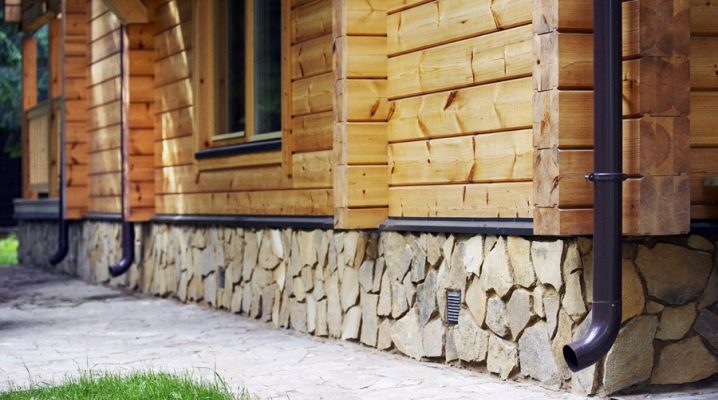
The foundation is the foundation of the building, provides stability and durability of the entire building structure. Recently, the foundation has been laid mainly with the use of concrete. However, the stone base is no less durable, moreover, it has an original and aesthetic appearance. A significant advantage is also the fact that laying the stone base of the building is quite feasible with your own hands.
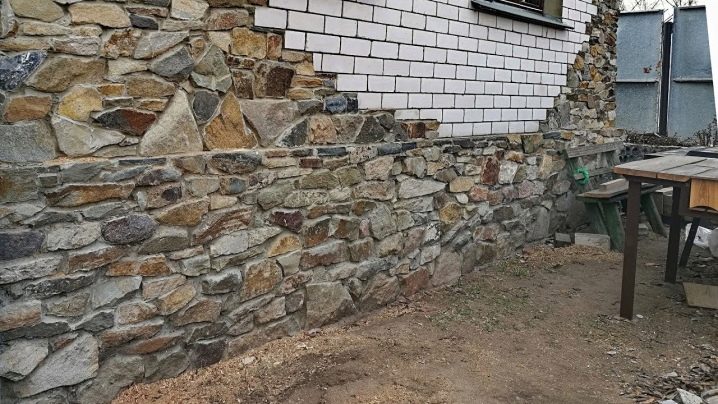
Material features
For the construction of the foundations of buildings and basements, rubble stone is mainly used. This material has been used for similar purposes for many centuries. The choice fell on this type of rock for a reason. Rubble stone is very durable. An important role is played by its availability, and, therefore, a relatively low cost. The extraction of rubble material is no more difficult than the process of extraction of natural clay.
Booth is mined in two ways: by blasting and chipping in quarries or by natural destruction of the rock.
The most suitable for building a foundation is flagstone quarry. Fragments of this breed have a relatively flat shape, which makes it more convenient to stack.

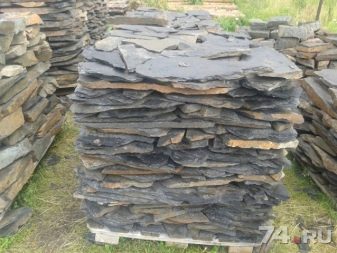
First, let's look at the advantages of a stone base.
- High strength indicators. Natural stone is practically resistant to splitting and deformation. This will provide the entire building with a solid foundation without subsidence, cracking or damage.
- The material is environmentally friendly. Rubble rock is mined from natural reserves. There are no artificial impurities in the stone, it does not undergo any chemical treatment.
- Natural rock is very resistant to temperature and weather conditions. Rubble stone is quite moisture resistant.
- Aesthetic appearance of the base. Rubble stone can have different colors and textures. Very beautiful natural patterns from the veins of the rock can often be observed on stone chips.
- The material is resistant to damage by microorganisms: fungus, mold. Insects will also not be able to damage it.
- Rubble stone is affordable, since its extraction is not laborious. It is not rare or scarce.
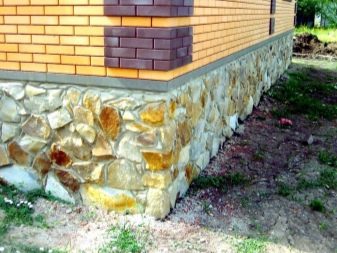
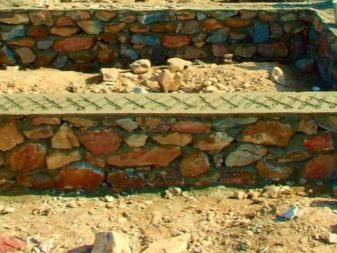
It is useful to recall the difficulties that may arise in the process of building a stone foundation.
- The adjustment of the stones during the laying process is somewhat difficult. Since the material is mined by spalling and does not undergo further processing, the elements retain their natural free shape and vary in size. For a dense and even laying, it is necessary to devote time to the optimal selection of stones for each layer.
- Additional time and effort will need to be spent preparing the cement or concrete mortar. It is necessary for fastening stone elements together.
- Rubble stone is unsuitable for laying the foundations of multi-storey buildings.
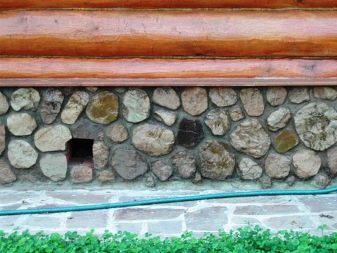
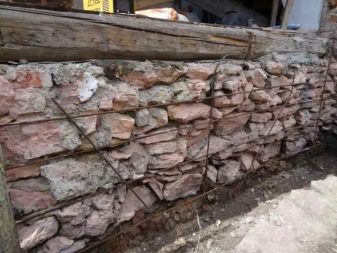
Selection Tips
When choosing a wild natural stone, you need to take a good look at the fragmentation elements. The stone should not have defects in the form of cracks or delamination, it should not crumble.
Make sure that the lot contains at least 90% of a large stone, and that its color is uniform and uniform.
Flat stones are the most convenient for laying.
The strength of the rock can be checked by applying force to the material. To do this, you need a heavy, massive hammer.After applying a strong blow to the stone, a ringing sound should be heard. This indicates the good quality of this breed. A solid stone will remain intact and will not split.
The material should not be overly porous. To check the water resistance of a stone, it is necessary to observe how it reacts to contact with water. If the rock actively absorbs water, it is unsuitable for construction.
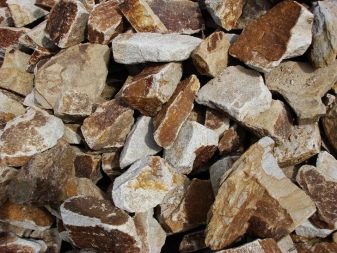
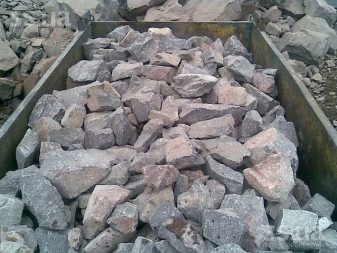
DIY stone foundation
Required tools:
- hammer;
- level;
- plumb line;
- rammer;
- hammer pickaxe;
- chisel;
- sledgehammer;
- measuring tape;
- shovel and bayonet shovel.



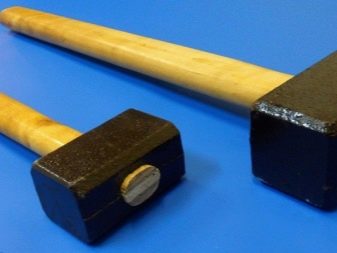
The first stage of the work is to prepare the territory.
- The surface is cleared of debris and vegetation.
- Further, the marking is carried out according to the dimensions of the base of the building under construction. These markings are used to prepare trenches for laying stone. Their depth should be at least 80 cm, width at least 70 cm. The depth of the laying trenches directly depends on the degree of freezing of the soil in the cold season.
- Formwork is being installed.
- At the bottom of the trenches, sand is poured in a small, about 15 cm, layer. Next, water is poured and tamped. After that, gravel or fine crushed stone is poured.
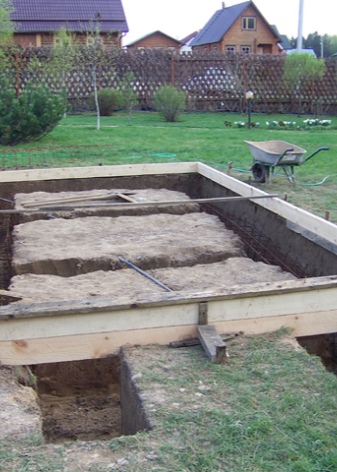
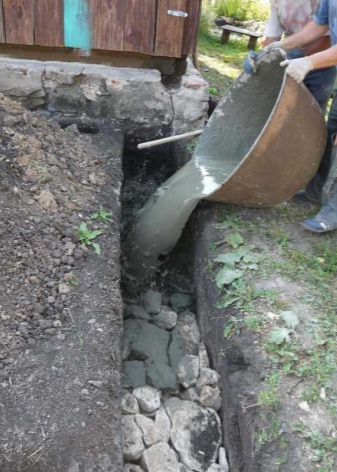
Stone laying
Before starting work on laying the stone base of the house, it is necessary to prepare a concrete or cement mortar. On average, 1 part of the stones is consumed 1 part of the laying solution. The cement composition is prepared in the following proportions: for 1 kg of cement, 3 kg of sand is taken, the mixture is diluted with water until a fluid mass is obtained. The mortar should not be thick, since in this case it will not be possible to fill the voids and gaps between the stone elements with it.
The concrete solution is prepared according to the instructions supplied by the manufacturer. For the convenience of laying stone elements, pull the guide tape or threads around the perimeter of the formwork walls. The foundation stone must first be soaked in water for at least an hour.
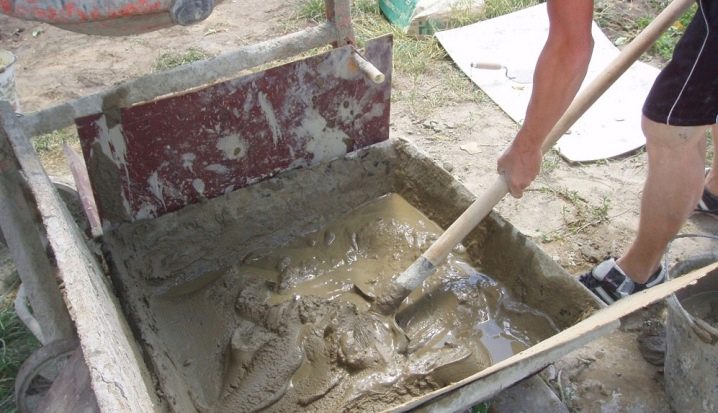
It is necessary to follow the rules of masonry to build a solid foundation.
- The first row of the base is laid out from the largest stones. Elements should be selected in such a way that there is practically no free space between them. The voids are filled with prepared masonry mortar. Before this, the structure is compacted by tapping with a hammer.
- The second layer is laid in such a way that the seams below the running layer are covered with stones. Elements should also be selected in such a way that the size of the gaps is minimal. This rule is the same for the entire height of the stone foundation to be laid.
- In the corners of each subsequent row, stones up to 30 cm high should be laid. They will play the role of a kind of "beacons" to control the uniform height of the rows.
- The last row requires a very careful selection of stones. It is final and should be as even as possible.
- When the laying is completed, the formwork is removed. After that, the gap between the trench wall and the rubble masonry is filled with small stone or stone chips. This backfill will serve as a good drainage layer in the future.
- The structure is protected by a reinforcing belt. It will hold the armature. Steel rods with a diameter of 10-12 mm are placed in a reinforcing belt with a pitch of 15-20 cm.
- For additional reinforcement, steel rods are tied together with knitting wire.
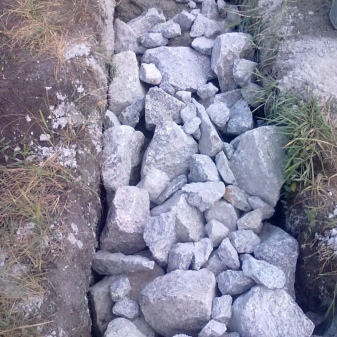

The reinforcing frame can be made independently, or ordered ready-made according to the measurements taken after laying the stone base. A waterproofing material is laid on the reinforcing frame. Further, the building is further extended.
Expert advice
If you have chosen natural stone for the foundation, use the advice of professionals.
- For better adhesion of the stone to the masonry mortar, the material must be well cleaned.
- The masonry structure should be as solid as possible. Gaps and voids are minimized by selecting stones.
- The thickness of the layer of concrete or cement composition should not be more than 15 mm. An increase in its thickness increases the likelihood of subsidence of the entire structure.
- Corner stones are subject to more careful selection. They are supporting and must be of high strength. Visually inspect for cracks or damage. It will not be superfluous to check strength by hitting with a heavy hammer or sledgehammer.
- It is necessary to introduce technological holes in the foundation into the project in advance: ventilation, vents, water and sewer communications.
- If there are large gaps and it is impossible to eliminate them, it is recommended to fill the cavity with a small stone, stone chips or gravel.
- It is advisable to use a bed butt for laying the first and last rows of the foundation, since it has the most even planes. This will provide stability to the structure. The final row serves as the basis for further superstructure of the building, therefore it is important that the surface of the stone layer is as flat as possible.
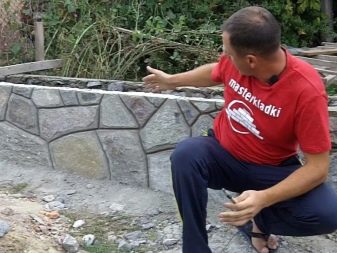

The basics of laying rubble stone are in the next video.













The comment was sent successfully.